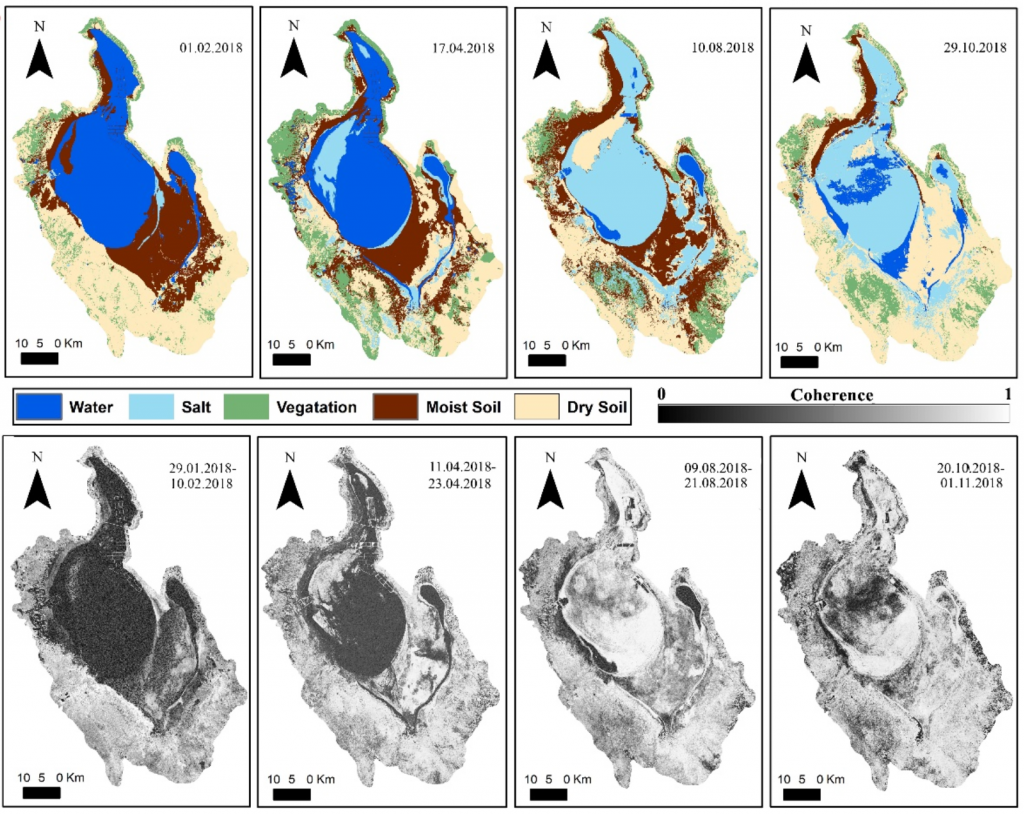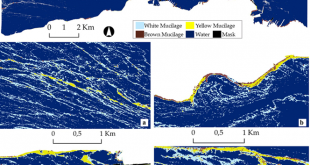Remote Sensing 2021, 13, 2701
Analysis of Salt Lake Volume Dynamics Using Sentinel-1 Based SBAS Measurements: A Case Study of Lake Tuz, Turkey
Burhan Baha Bilgilioğlu, Esra Erten and Nebiye Musaoğlu
Abstract: As one of the largest hypersaline lakes, Lake Tuz, located in the middle of Turkey, is a key waterbird habitat and is classified as a Special Environmental Protection Area in the country. It is a dynamic lake, highly affected by evaporation due to its wide expanse and shallowness (water depth <40 cm), in addition to being externally exploited by salt companies. Monitoring the dynamics of its changes in volume, which cause ecological problems, is required to protect its saline lake functions. In this context, a spatially homogeneous distributed gauge could be critical for monitoring and rapid response; however, the number of gauge stations and their vicinity is insufficient for the entire lake. The present study focuses on assessing the feasibility of a time-series interferometric technique, namely the small baseline subset (SBAS), for monitoring volume dynamics, based on freely available Sentinel-1 data. A levelling observation was also performed to quantify the accuracy of the SBAS results. Regression analysis between water levels, which is one of the most important volume dynamics, derived by SBAS and levelling in February, April, July and October was 67%, 80%, 84%, and 95% respectively, for correlation in the range of 10–40 cm in water level, and was in line with levelling. Salt lake components such as water, vegetation, moist soil, dry soil, and salt, were also classified with Sentinel-2 multispectral images over time to understand the reliability of the SBAS measurements based on interferometric coherence over different surface types. The findings indicate that the SBAS method with Sentinel-1 is a good alternative for measuring lake volume dynamics, including the monitoring of water level and salt movement, especially for the dry season. Even though the number of coherent, measurable, samples (excluding water) decrease during the wet season, there are always sufficient coherent samples (>0.45) over the lake.

Available Online: https://www.mdpi.com/2072-4292/13/14/2701
 UHUZAM İTÜ – Uydu Haberleşme ve Uzaktan Algılama UYG-AR Merkezi
UHUZAM İTÜ – Uydu Haberleşme ve Uzaktan Algılama UYG-AR Merkezi 